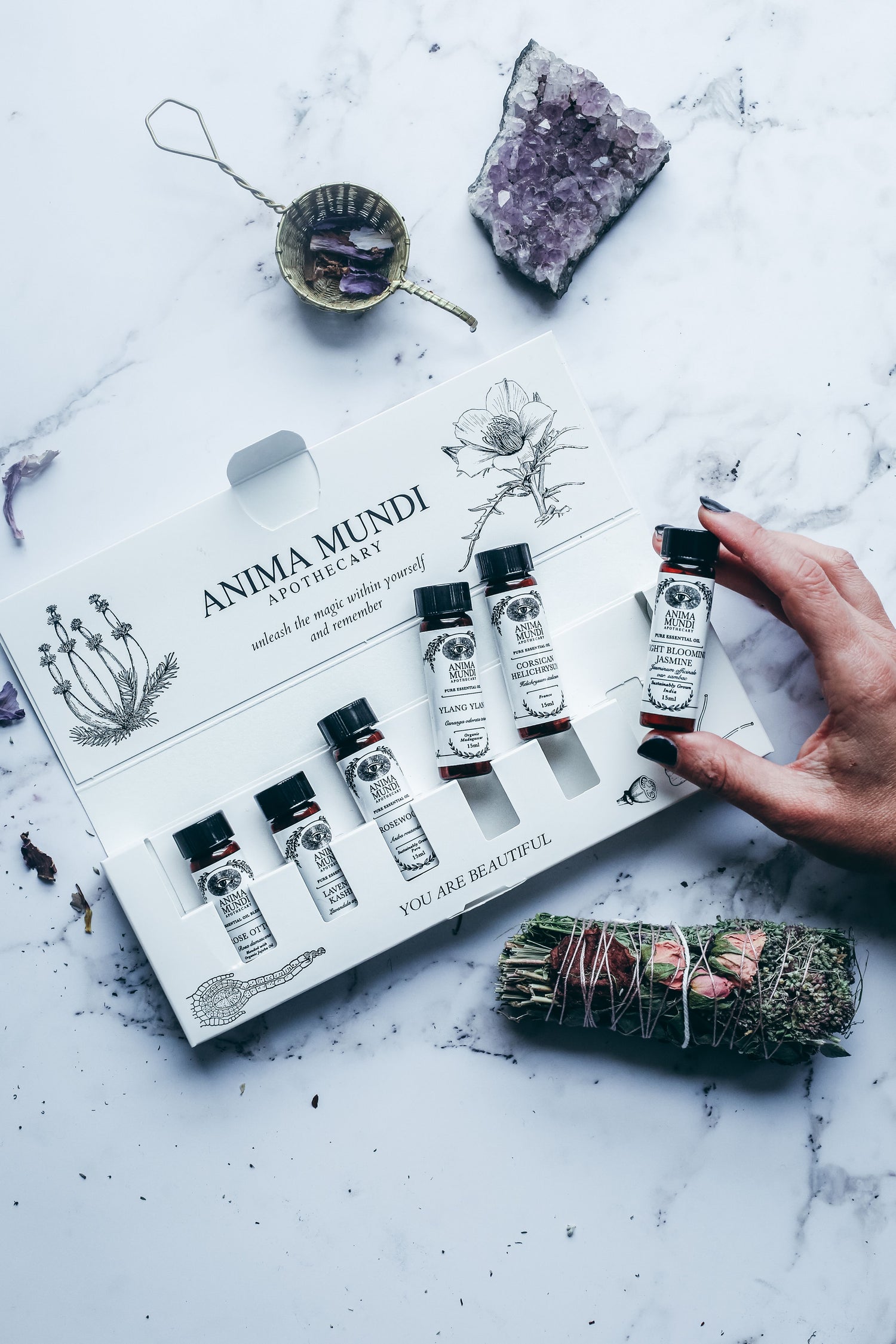While it’s certainly a bit strange that Latinx Heritage Month—or Hispanic Heritage Month (official government designation)—awkwardly begins in the middle of this month, as a Latina-owned business dedicated to sharing the people’s medicine, we couldn’t wait until September 15 to celebrate with you! At Anima Mundi, we honor Latin American herbal traditions year-round through hundreds of plant medicine offerings, free articles, educational experiences, and at our newly opened Costa Rica apothecary in our founder’s home country. Still, Latinx Heritage Month provides a special opportunity for us all to pause and acknowledge the profound contributions of our people. In celebrating these herbs and traditions, we pay tribute to our diverse cultural heritages, aiming to deepen your awareness and appreciation of the universal value of Indigenous plant knowledge.
For hundreds, if not thousands, of years, Indigenous and Latinx people have traversed the globe sharing herbal knowledge and keeping their sacred traditions alive. The knowledge of these herbs has been meticulously preserved through generations. Using both oral testimonies and written records, Indigenous wisdom keepers of the Latinx Diaspora were among the earliest pioneers to blend cultural and spiritual practices with medicinal plant usage. All this despite colonialism, modernization, climate change, and other threats to their lands and their ways of sustaining life!
Historical records from the Spanish conquest even document the extensive use of these plants in indigenous healing rituals. Today, modern science is just starting to scratch the surface of validating what Indigenous peoples have known about medicinal plants for hundreds of years. As we look to the future, a growing interest in bridging the gap between traditional and scientific approaches to herbal medicine is evident. This convergence holds the dual promise of enhanced therapeutic options and a deeper appreciation for the wisdom of ancient traditions. We honor the wisdom of the ancients, and we hope to positively contribute to a future where traditional and modern approaches to health can coexist and flourish.
Folk Remedies: Historical Context + Indigenous Roots
Indigenous communities across Latin America have long relied on the natural world for health and healing, developing extensive knowledge of local plants and their uses. Cultures such as the Maya, Aztec, Inca, and others created complex systems of herbal medicine based on centuries of observation, experimentation, and spiritual practice. These ancient societies integrated medicinal plants into their daily lives and rituals, reflecting their holistic view of health that connected physical well-being with Nature and her powerful cosmic forces.
The Maya—whose civilization began to develop in Central America and parts of Mexico around 2000 BCE, reaching its peak from approximately 250 AD to 900 AD and thriving until the Spanish conquest in the 16th century—held a holistic perspective on health. They believed in balancing physical health with nature and the cosmos, employing medicinal plants, religious ceremonies, and spiritual guidance to achieve this balance. Their intricate knowledge of herbs and their applications formed the basis of their understanding that health was intertwined with broader spiritual and philosophical frameworks.
The Aztecs, flourishing from approximately 1300 AD to the early 16th century, also had a sophisticated approach to medicine. They used various natural remedies, such as inhaling tobacco for headaches and applying avocado to treat skin conditions. Both the Maya and the Aztecs demonstrated an advanced understanding of the management of holistic health by merging practical and spiritual elements.

Contemporary Latin American folk remedies represent the confluence of indigenous knowledge and Spanish influences, reflecting how local traditions and colonial conquest were often forcibly merged to address common ailments through a diverse array of herbal and ritualistic methods. For instance, Ruda (Rue) is a plant long revered for its protective properties and commonly used in ritual baths to ward off evil spirits and promote healing. That Ruda remains an important remedy is just one example of how pre-Columbian beliefs, indigenous practices, and Spanish cultural elements were gradually adapted over time and preserved (though not always in their original usage or geographical location) to support physical, mental, and spiritual health and well-being.
Another prominent remedy in Latin American folk medicine is Guayusa (Ilex guayusa), a tree native to the Amazon rainforest. Indigenous tribes like the Kichwa traditionally use Guayusa for its stimulant effects, leveraging its rich caffeine and antioxidant content to enhance mental clarity and focus. Hierbabuena (Spearmint, Mentha spicata) is frequently used in Latin American folk medicine to address digestive and respiratory issues. Its calming effects are well-documented, making it a popular remedy among both traditional and contemporary herbalists. The Latin American Diaspora continues to practice and adapt these remedies, preserving a link to ancestral traditions while integrating new influences. The resilience of these practices in modern times further proves their significance and relevance as global interest in sustainable, natural healing continues to rise.
Today, traditional medicine remains vital among Hispanic populations, particularly in areas with many agricultural workers, such as South Texas. Practices like those of the sobadores and yerberos continue to be significant. Sobadores offer manual therapies rooted in cultural beliefs, while yerberos use herbal remedies like Chamomile, Aloe Vera, and Eucalyptus. Curanderismo, a traditional healing system blending herbal medicine with spiritual practices, remains prevalent. Common conditions treated by curanderos include mal de ojo, susto, mollera caída, and empacho, highlighting the ongoing relevance of these traditional practices in contemporary health care [1].
Medicinal Properties of Latin American Healing Herbs
The Latin American Diaspora encompasses many long-standing traditions of developing and practicing herbal medicine, working in harmony and reverence with Nature to prevent, treat, and alleviate a variety of ailments and dis-eases with endemic plants. Deeply rooted in the tried and tested knowledge of their ancestors, Indigenous communities from the Amazon to the Andes have used plants like Ayahuasca and Chanca Piedra (“the stone breaker”) for centuries—not just as folk remedies but as sacred tools for spiritual, emotional, and physical healing. Chanca Piedra (Phyllanthus niruri) is known for its efficacy in treating both kidney stones and liver conditions, and its many healing properties have now been validated by scientific research.
Furthermore, numerous studies have confirmed that Pau D’Arco (T. impetiginosa) possesses various pharmacological activities, including anti-obesity, antibacterial, antifungal, antiviral, anti-psoriatic, antioxidant, anti-inflammatory [2], and anti-cancer activities [3]. For over 50 years, extensive scientific research has been conducted on Pau D’Arco, demonstrating its ability to protect against viruses and candida overgrowth, its skin nourishing properties, and its value as a general tonic for the reproductive organs. Perhaps that’s one reason this immune-protective herb is referred to as the rainforest “heal-all”. It’s no coincidence that throughout South America, tribes living thousands of miles apart have employed Pau D’Arco for similar (or identical) medicinal purposes for centuries.

Native to the Amazon rainforest and other tropical areas of South and Latin America, Pau D’Arco is best known for its durable wood and vibrant flowers. The Tabebuia genus, which includes about 100 species, is widely appreciated not only for its aesthetic appeal but also for its use in herbal medicine. The indigenous peoples of the Amazon have relied on Pau D’Arco for centuries, utilizing its bark and wood to treat various ailments, from infections and respiratory issues to arthritis and cancer. This traditional use is supported by modern herbal practices across North and South America, where the tree is recognized for its antibacterial, antifungal, anti-inflammatory, and anticancer properties.
The medicinal properties of Pau D’Arco are attributed to its rich phytochemical content, particularly quinoids like lapachol and beta-lapachone. These compounds have been extensively studied for their potential anticancer and antimicrobial effects. Research in the 1960s and 1970s highlighted the antitumor activity of lapachol, although subsequent studies revealed challenges related to side effects. Despite this, the broader range of chemicals found in Pau D'Arco continues to be of interest, with recent studies exploring beta-lapachone's promising anticancer properties. However, to ensure the best results, it is essential to source high quality Pau D’Arco and prepare it correctly, as traditional methods suggest boiling the bark to extract its active compounds fully. [4]
The integration of traditional knowledge with modern science is crucial for validating and expanding the use of Latin American herbs. Recent studies have explored the pharmacological properties of several traditional herbs, providing evidence for their efficacy and safety:
This list is by no means exhaustive! Many traditional healing herbs used throughout the Latin American Diaspora—including several more we currently stock in store and online, and others like Cat’s Claw and Sangre de Drago that will soon be available at Anima Mundi—continue to bridge ancient traditions with contemporary wellness practices, reflecting the lasting, living legacy of the Indigenous people on whose land these precious plants have long been cultivated.
Keep reading here for more about indigenous medicines from the Latinx diaspora. To learn about some of the key herbs, healers, literature and other contributions to plant-based healing traditions from Mexico, the Caribbean, Spain, Central and South America, visit the blog.



























